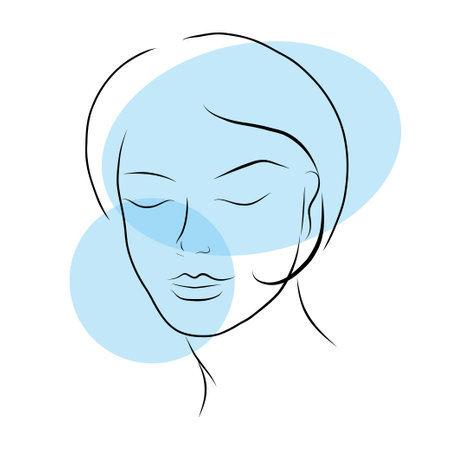Introduction: Why Laser Hair Removal Sparks So Much Conversation
Laser hair removal has become one of the most buzzed-about cosmetic treatments in the United States. From Instagram influencers to everyday Americans, people everywhere are talking about zapping away unwanted hair for good. But with this surge in popularity comes a flood of information—and plenty of misinformation. Why does laser hair removal spark so much conversation and confusion? The answer lies in its rapid adoption, evolving technology, and the way beauty trends spread through American pop culture.
The Rise of Laser Hair Removal in America
Over the past decade, laser hair removal has moved from being an exclusive spa treatment to a mainstream option available at clinics and medspas across the country. According to industry reports, millions of Americans now opt for this procedure every year. The appeal is clear: it promises long-term results, saves time compared to shaving or waxing, and aligns with the growing demand for convenient self-care solutions.
Laser Hair Removal by the Numbers
| Year | Estimated U.S. Treatments (Millions) |
|---|---|
| 2015 | 2.1 |
| 2020 | 3.9 |
| 2023 | 4.5+ |
This steady growth shows just how normalized laser hair removal has become among Americans of all ages and backgrounds.
Why Myths and Misconceptions Stick Around
Despite its popularity, myths about laser hair removal persist. There are several reasons these misconceptions continue to circulate:
- Lack of Standardization: Not all providers use the same equipment or techniques, leading to varied experiences and stories.
- Cultural Influences: Social media spreads both real results and exaggerated claims faster than ever.
- Fear of the Unknown: Because it’s a technical procedure involving lasers, many people are naturally cautious or skeptical.
- Misinformation Online: Outdated articles and viral posts can easily confuse potential patients.
The result? Many Americans are left wondering what’s fact and what’s fiction when it comes to laser hair removal.
The Most Common Myths You’ll Hear About Laser Hair Removal
| Myth | Reality Check |
|---|---|
| “It only works on light skin.” | Modern technology makes treatment safe for many skin tones. |
| “It’s too painful.” | Sensation varies, but most describe it as mild discomfort. |
| “Results are instant.” | Takes multiple sessions for best results. |
| “It causes more hair to grow.” | No evidence supports this claim. |
The fascination—and confusion—around laser hair removal is unlikely to fade anytime soon. As more people consider this option, separating fact from fiction becomes even more important for making informed choices about beauty and wellness.
Myth vs. Reality: Who Is Eligible for Laser Hair Removal?
Understanding Eligibility: Skin Tone, Hair Color, and Age
Laser hair removal has become a go-to solution for many Americans seeking long-term hair reduction, but there are still plenty of misconceptions about who can actually benefit from the treatment. Let’s break down some of the most common myths and see what’s really true.
Myth #1: Only People with Light Skin and Dark Hair Can Get Laser Hair Removal
This is one of the oldest myths in the book. While it’s true that early laser technology worked best on people with light skin and dark hair, advancements have made laser hair removal accessible to a much wider range of skin tones and hair types. Modern lasers like Nd:YAG are designed specifically to treat darker skin safely and effectively. Here’s a quick look at how eligibility has expanded:
| Skin Tone | Older Technology | Modern Technology |
|---|---|---|
| Light | Effective | Effective |
| Medium | Less Effective | Effective |
| Dark | Not Recommended | Effective (with specific lasers) |
Myth #2: Laser Hair Removal Doesn’t Work for Blonde, Red, or Gray Hair
This misconception stems from the fact that lasers target pigment (melanin) in the hair follicle. It’s true that the process works best on darker hair, but new technologies have made improvements for lighter hair colors. Results may not be as dramatic as with dark hair, but many people with blonde or red hair still see noticeable reduction. For gray or white hair, options are more limited, but consulting with a reputable provider can help determine what might work best.
Quick Reference: Hair Color & Effectiveness
| Hair Color | Effectiveness Level | Notes |
|---|---|---|
| Black/Brown | High | Best results with all laser types |
| Blonde/Red | Moderate | Results vary; consult your technician |
| Gray/White | Low | Lesser effect; ask about alternative treatments |
Myth #3: There’s an Age Limit for Laser Hair Removal Treatments
A lot of people believe you have to be a certain age—usually over 18—to get laser hair removal. In reality, there’s no strict age limit. Teenagers can undergo treatments with parental consent, especially if excessive hair growth is causing emotional distress or self-esteem issues. The key factor is whether the individual’s hair growth has stabilized, which usually happens after puberty.
The Takeaway: A Personalized Approach Is Key
No two people are exactly alike when it comes to skin tone, hair color, or personal needs. The best way to find out if laser hair removal is right for you is to book a consultation with a qualified provider who understands today’s advanced technology and can tailor a plan just for you.

3. Safety First: Addressing Fears and Misunderstandings
When it comes to laser hair removal, safety is often the biggest concern people have. There’s no shortage of scary stories online, but how much of that is actually true? Let’s break down the real facts about FDA-approved laser devices and clear up some of the most common fears.
Are Laser Hair Removal Devices Safe?
Yes—when performed with FDA-approved equipment by a trained professional, laser hair removal is considered very safe for most people. The technology has come a long way, with strict regulations in place to ensure both effectiveness and safety.
Common Myths vs. Facts About Laser Safety
| Myth | Fact |
|---|---|
| Laser hair removal causes cancer. | No scientific evidence links laser hair removal to cancer. The lasers target hair follicles, not DNA or internal organs. |
| Lasers burn the skin badly. | Mild redness or swelling can happen, but serious burns are rare with FDA-approved devices and proper technique. |
| Treatments are too painful to handle. | Most people describe the sensation as a quick snap or mild discomfort, not unbearable pain. Numbing creams can be used if needed. |
| Laser treatments are unsafe for dark skin tones. | Modern lasers (like Nd:YAG) are designed for a variety of skin types, including darker tones, when used by experienced providers. |
The Role of FDA Approval
The U.S. Food and Drug Administration (FDA) carefully evaluates all medical devices before they reach the market. FDA approval means a device has been tested for safety and effectiveness under real-world conditions. Only devices that meet strict standards get approved—so always ask if your provider uses FDA-cleared technology.
What About Side Effects?
Side effects from laser hair removal are usually minor and temporary. These may include slight redness, swelling, or sensitivity similar to a mild sunburn. Serious complications are extremely rare when treatments are done by licensed professionals using proper equipment.
Busting Exaggerated Online Health Risks
If you’ve seen horror stories on social media or forums, remember that negative experiences often get more attention than positive ones. Most problems come from untrained operators or cheap, non-FDA devices—not from reputable clinics following safety guidelines. For peace of mind, do your homework: check credentials, read reviews, and don’t hesitate to ask questions about the device being used.
4. Pain Points: Is Laser Hair Removal Actually Painful?
Understanding the Fear Factor
When it comes to laser hair removal, one of the most common questions people ask is: “Does it hurt?” The idea of a laser zapping your skin can sound intimidating, but lets break down what you can really expect—especially compared to traditional hair removal methods like waxing and shaving.
Laser vs. Waxing vs. Shaving: Real-World Experiences
Everyone’s pain threshold is different, but most clients describe the sensation of laser hair removal as a quick snap, similar to a rubber band flicking against the skin. It’s fast, and any discomfort usually fades within seconds after each pulse. Compare this to waxing, which pulls hair from the root and often causes lingering soreness or redness, or shaving, which can lead to nicks, razor burn, and itchy regrowth.
Pain Level Comparison Table
| Hair Removal Method | Pain Level (1-10) | User Description |
|---|---|---|
| Laser Hair Removal | 2-5 | “Like a quick snap or pinch—way less than waxing!” |
| Waxing | 6-8 | “A sharp sting that lingers for a while after.” |
| Shaving | 1-3* | “Usually painless unless I nick myself or get razor burn.” |
*Note: While shaving is generally considered low-pain, many report irritation and bumps especially on sensitive skin.
What Real People Are Saying
- Samantha from California: “I was nervous at first, but laser hair removal was way easier than my usual wax appointments. It felt like little snaps—nothing unbearable.”
- Aaron from Texas: “I’ve been shaving daily since college. Honestly, laser stings a bit, but it’s over so fast. No more razor bumps!”
- Maya from New York: “After years of waxing my legs, I switched to laser. The pain is totally manageable and there’s zero sticky mess afterward.”
What Influences the Sensation?
Pain levels can vary based on your personal pain tolerance, the area being treated (bikini lines are more sensitive than arms), and even your skin type. Most modern clinics use cooling devices or numbing creams to make sessions more comfortable.
5. Truth About Results: What to Expect Short- and Long-Term
How Many Sessions Do You Really Need?
One of the biggest myths about laser hair removal is that it’s a one-and-done treatment. In reality, multiple sessions are needed for best results. The number of sessions depends on factors like your skin tone, hair color, and the area being treated. Most people need between 6 and 8 sessions spaced several weeks apart.
| Body Area | Average Sessions Needed | Session Frequency |
|---|---|---|
| Face (upper lip, chin) | 6–8 | Every 4–6 weeks |
| Underarms | 6–8 | Every 4–6 weeks |
| Bikini Line | 6–8 | Every 4–6 weeks |
| Legs | 8–10 | Every 6–8 weeks |
| Back/Chest | 8–10 | Every 6–8 weeks |
What Kind of Results Are Realistic?
A common misconception is that laser hair removal guarantees 100% permanent hair removal for everyone. The truth is, results vary from person to person. Most clients see a significant reduction in hair growth—usually about 70-90%. Some fine or light-colored hairs may persist, as lasers target pigment in the hair.
Short-Term Results:
- Smoother skin after each session, with less noticeable regrowth between treatments.
- Treated hair sheds over the next couple of weeks post-session.
- Mild redness or sensitivity may occur temporarily.
Long-Term Results:
- Dramatic reduction in overall hair growth in treated areas.
- If hair does grow back, it’s usually finer and lighter in color.
- Most people require annual “touch-up” sessions to maintain smooth results.
The Science Behind Permanent Hair Reduction
Laser hair removal works by targeting the melanin (pigment) in hair follicles with concentrated light energy. This damages the follicle, slowing down or stopping future growth. However, because hair grows in cycles and not all follicles are active at the same time, multiple sessions are necessary to catch each follicle during its growth phase (anagen phase).
Key Takeaways:
- You’ll need several sessions for optimal results—usually more than you might expect.
- Permanently smooth skin is achievable for many, but some maintenance is normal.
- The treatment is backed by science, but individual results depend on your unique biology.
6. Cost Talk: Is Laser Hair Removal Worth the Investment?
When considering laser hair removal, many Americans are curious about whether the cost matches the value, especially given our fast-paced lifestyles and love for convenience. Let’s break down the numbers and see how laser hair removal stacks up against traditional hair removal methods over time.
Understanding the Upfront Cost
The sticker price for laser hair removal can be intimidating. Depending on the area treated and your location, a single session in the U.S. may range from $150 to $500, with most people needing 6-8 sessions for optimal results. At first glance, that seems steep compared to a razor or a waxing kit you pick up at the drugstore.
Comparing Long-Term Costs
| Method | Average Yearly Cost | Time Spent Per Year | Long-Term Results |
|---|---|---|---|
| Laser Hair Removal | $1,200 – $3,000 (total for full treatment) | ~10 hours (full course) | Semi-permanent to permanent reduction |
| Waxing (Professional) | $600 – $1,200 | ~18 hours (bi-monthly appointments) | Temporary (lasts 3-6 weeks) |
| Shaving (DIY) | $100 – $250 | ~60 hours (multiple times weekly) | Very temporary (lasts days) |
| Creams/Depilatories | $80 – $200 | ~30 hours | Temporary (lasts up to a week) |
Lifestyle Fit: Why It Matters in America
Americans value efficiency and time-saving solutions. Laser hair removal appeals to busy schedules because after the initial investment of both money and time, maintenance is minimal—think quick touch-ups once or twice a year. Compare that to weekly shaving or frequent waxing appointments, and it’s clear why so many are making the switch.
Myth vs. Fact: “It’s Too Expensive”
Myth: Only celebrities or wealthy people can afford laser hair removal.
Fact: While the upfront cost is higher than buying razors or wax, many find that over several years, laser hair removal actually saves money—and definitely saves time.
The Takeaway for American Consumers
If you’re tired of constant upkeep and want smoother skin with less hassle, laser hair removal can be a smart investment. The upfront cost buys you long-term freedom from daily or weekly routines—a tradeoff more Americans are willing to make as they prioritize convenience and self-care.
7. Conclusion: Making Informed Choices in the Age of Misinformation
In today’s digital world, information about laser hair removal is everywhere—but not all of it is accurate. Myths, outdated facts, and marketing claims can make it tough to know what’s real. Let’s recap what you really need to know to stay ahead of the curve and make confident choices for your skin and self-care routine.
Key Takeaways at a Glance
| Myth | Fact |
|---|---|
| Laser hair removal works on everyone the same way | Results vary based on skin tone, hair color, and technology used |
| One session is enough for permanent results | Multiple sessions are needed for lasting effects |
| The treatment is unsafe or painful | Modern lasers are FDA-approved and most people experience mild discomfort only |
| You cant do laser hair removal in summer | You can, but sun protection is key before and after treatments |
| Only women get laser hair removal | All genders benefit; treatments are increasingly popular with men too |
Empowering Your Decisions in 2024 and Beyond
With social media trends, influencer reviews, and rapid advances in beauty tech, it’s easy to get swept up by hype or misconceptions. Here are some simple tips to help you cut through the noise:
- Check credentials: Always choose licensed professionals for your treatments.
- Ask questions: Don’t be shy—your provider should explain how laser technology works for your unique skin and hair type.
- Look for science-backed info: Trust sources like the FDA, dermatologists, or leading medical clinics.
- Stay trend-aware: New devices or approaches hit the market every year. Keep an eye on innovations but remember that tried-and-true methods often deliver the best results.
- Avoid one-size-fits-all promises: Personalized care matters more than bold marketing statements.
Your Next Steps: Confidently Navigating Your Hair Removal Journey
The best way to navigate laser hair removal myths is with curiosity and a critical mindset. Whether you’re considering your first session or looking to upgrade your routine, being informed empowers you to choose what’s right for you—without falling for common misconceptions. Stay savvy, stay safe, and let knowledge lead your self-care decisions.


